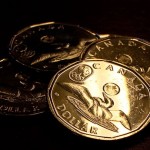 Gold futures traded close to lows unseen in four months on Friday, heading for their most significant weekly loss since September, as demand for the commodity has been pressured by renewed expectations that the Federal Reserve Bank may begin paring back its Quantitative Easing in the coming months.
Gold futures traded close to lows unseen in four months on Friday, heading for their most significant weekly loss since September, as demand for the commodity has been pressured by renewed expectations that the Federal Reserve Bank may begin paring back its Quantitative Easing in the coming months.
On the Comex division of the New York Mercantile Exchange, futures on gold with delivery in December were trading at $1 246.50 per troy ounce at 12:29 GMT, gaining 0.23% on a daily basis, after having fallen to $1 236.88 per troy ounce yesterday, or the lowest level since July 9th. Gold lost 3.6% during this week, or the most since the week to September 13th. CME Group Inc. reduced the margin requirements on gold trading, trimming the minimum cash deposit for speculators 9.4% to $7 975 per 100-ounce contract at the close of trading today.
Gold futures have plunged 26% this year on expectations that the Federal Reserve Bank will begin reducing the scale of its 85 billion-USD-per-month pace of asset purchases. The minutes of FOMC’s October meeting revealed the Federal Reserve might begin trimming its quantitative easing program “in the coming months”, if the economic recovery moves in the desired direction. The minutes, published on Wednesday, also showed that policymakers “generally expected that the data would prove consistent with the committee’s outlook for ongoing improvement in labor market conditions and would thus warrant trimming the pace of purchases in coming months.”
“The Fed minutes suggested that officials were looking for ways to exit or at least slow down, in fairly short order, the central bank’s asset-purchase program, which has been seen as supportive of gold prices,” said Mark To, head of research at Wing Fung Financial Group, a Hong Kong-based trader and refiner, cited by Bloomberg News.
The US dollar was put under pressure earlier in the week, following comments by Fed Vice-Chairwoman Janet Yellen, who supports Fed’s current bond purchasing program and after a statement by Ben Bernanke. The greenback drew support and pressured gold on Wednesday, after the US Commerce Department reported that retail sales rose 0.4% last month, exceeding the median estimate of 86 analysts, surveyed by Bloomberg for a minor 0.1% advance. September’s reading received an upward revision to 0.0%, after being initially estimated at -0.1%.
Gold was further pressured after the Labor Department said that US consumer inflation generally met analysts’ expectations and remained well below Fed’s official objective of 2%, restraining demand for the precious metal, as a hedge against rising prices.
At the same time, Billionaire hedge-fund manager John Paulson, the largest holder in the SPDR Gold Trust, told clients on November 20th, that he would not personally invest more funds in his gold fund, because it was not clear when inflation rate will pick up the pace. The SPDR fund is the world’s largest bullion-backed exchange-traded product. Assets in the SPDR contracted to 856.71 metric tons on Thursday, or the least since February 2009, while having shrank 37% this year.
This came after Federal Reserve Chairman Ben Bernanke said on Tuesday that the central bank will maintain its aggressive monetary policy for as long as necessary and will commence scaling back its monetary stimulus once it is assured the labor market recovery is robust, indicating dependence on currently released key data points out of the United States.





